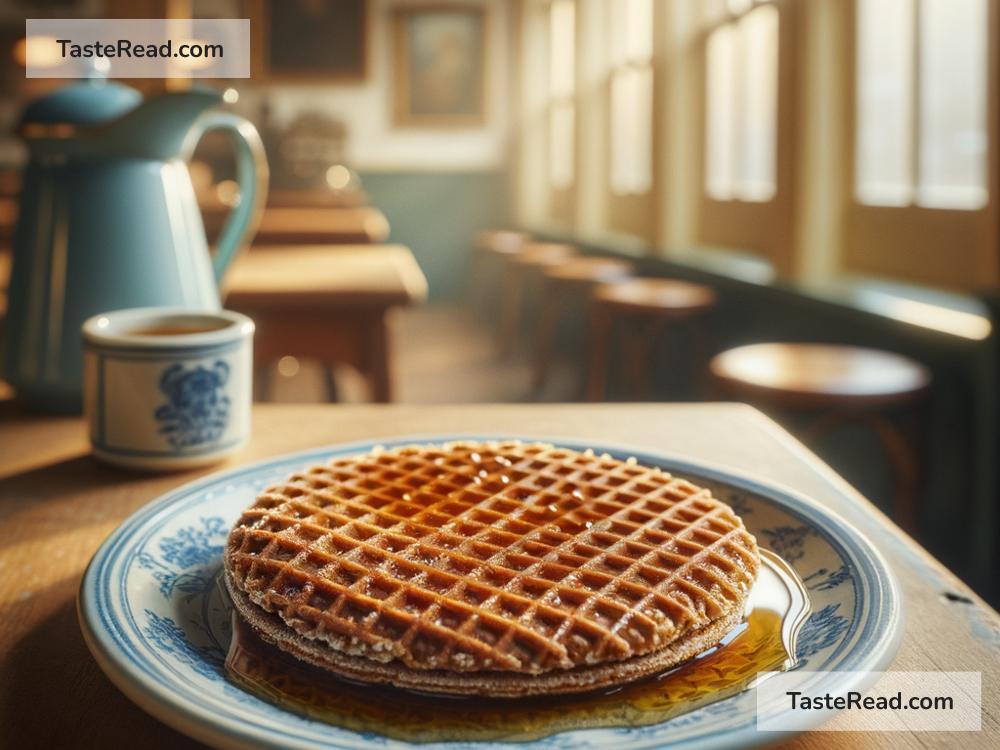Exploring the Origins of the Dutch Stroopwafel
Picture this: a perfect morning in the Netherlands, with the sun gently rising and the aroma of freshly brewed coffee filling the air. But wait, there’s something else that makes this picture complete – the sweet, caramel goodness of a stroopwafel. This delicious treat, originating from the Netherlands, has captured the hearts of many around the globe. But where did the stroopwafel come from, and how did it become such a beloved snack? Let’s take a delightful journey back in time to explore the origins of the Dutch stroopwafel.
The story of the stroopwafel takes us back to the late 18th century, to the town of Gouda – yes, the same place famous for its cheese. It was here, around the year 1784, that the first stroopwafel was thought to have been made. Contrary to the charming cafes and bakeries where you might find them today, the stroopwafel was born out of modesty and clever resourcefulness.
Bakers in Gouda would collect crumbs and leftovers from their day’s work – bits of dough, breadcrumbs, and other scraps that would otherwise be thrown away. In an effort to not waste these resources, they came up with a brilliant solution. They took these scraps, sweetened them with a syrupy filling, and pressed them together using a special waffle iron. The result? A deliciously crispy waffle with a gooey, sweet center. Initially, these treats were called ‘siroopwafels,’ but we know and love them today as stroopwafels.
The ingenious creation quickly gained popularity among the working class in the Netherlands. It was an affordable delight that offered a moment of sweetness and comfort. Over time, as the recipe was perfected, the stroopwafel began to make its way into the hearts (and stomachs) of people from all walks of life.
Fast forward to the present, the simple yet delectable stroopwafel has become an emblematic Dutch treat. It’s not just limited to its hometown of Gouda anymore; you can find stroopwafels in cafes, specialty stores, and even airports across the Netherlands and beyond. Their popularity has soared globally, with coffee shops and international markets selling them as an exotic delicacy.
But what makes a stroopwafel a stroopwafel? At its core, it consists of two thin layers of baked dough with a caramel-like syrup filling in the middle. The traditional way to enjoy a stroopwafel is to place it on top of a hot cup of tea or coffee, allowing the steam to gently warm it up. This softens the syrup center, making the stroopwafel irresistibly warm and gooey.
In recent years, there has been a surge in creativity around this classic treat. From stroopwafel-flavored ice creams to liqueurs, and even elaborate desserts, the humble origins of the stroopwafel have sparked culinary innovation and delight.
Interestingly, the stroopwafel’s journey also reflects a broader tale of sustainability and resourcefulness. The bakers of Gouda in the 1780s showed us that delicious innovations could come from the mindful use of leftovers. In today’s world, where food waste is a growing concern, the story of the stroopwafel’s origin is a timely reminder of the value in repurposing and reimagining what we have.
In conclusion, the Dutch stroopwafel is much more than just a tasty snack. It’s a testament to human creativity, a symbol of Dutch culinary tradition, and an inspiration for sustainable practices. From its humble beginnings in Gouda to its current status as a beloved international delicacy, the stroopwafel has embarked on a remarkable journey. Whether you enjoy it warmed over a hot drink or as a crunchy treat straight from the packet, each bite is a taste of Dutch history and innovation. So, the next time you savor a stroopwafel, remember the clever bakers of Gouda and the simple beginnings of this globally cherished delight.


